When it comes to the night sky, you can see something spectacular almost every night. Each year brings its own rare and unmissable celestial events, and 2021 and 2022 are no exceptions. We’ve prepared this astronomy calendar for 2021-2022 to help you plan ahead for all of the best stargazing and astronomical events occurring before the end of 2022!
See also:
Our complete guide to astronomical events for 2021-2022 is available here as an interactive flip-booklet (click to view full-screen):
Click Here to Download or Share
If you would rather read a “plain text” version of our astronomical events calendar 2021-2022, keep reading… the rest of this page is for you!
2021 – Astronomical Events Calendar (July to December)
The second half of 2021 provides us with a wide range of breathtaking astronomical events!
Besides a number of opportunities to see each of the five naked-eye planets (Mercury, Venus, Mars, Jupiter and Saturn), you can catch the Perseid meteor shower and a near-total eclipse of the Moon. The list below includes some of the best stargazing & astronomical events remaining in 2021!
July 1st to 23rd – Venus & Mars
These two planets have slowly drawn closer together over the past few months. Venus is gradually moving away from the Sun, while slower-moving Mars is losing ground. As a result, the gap between the two has closed.
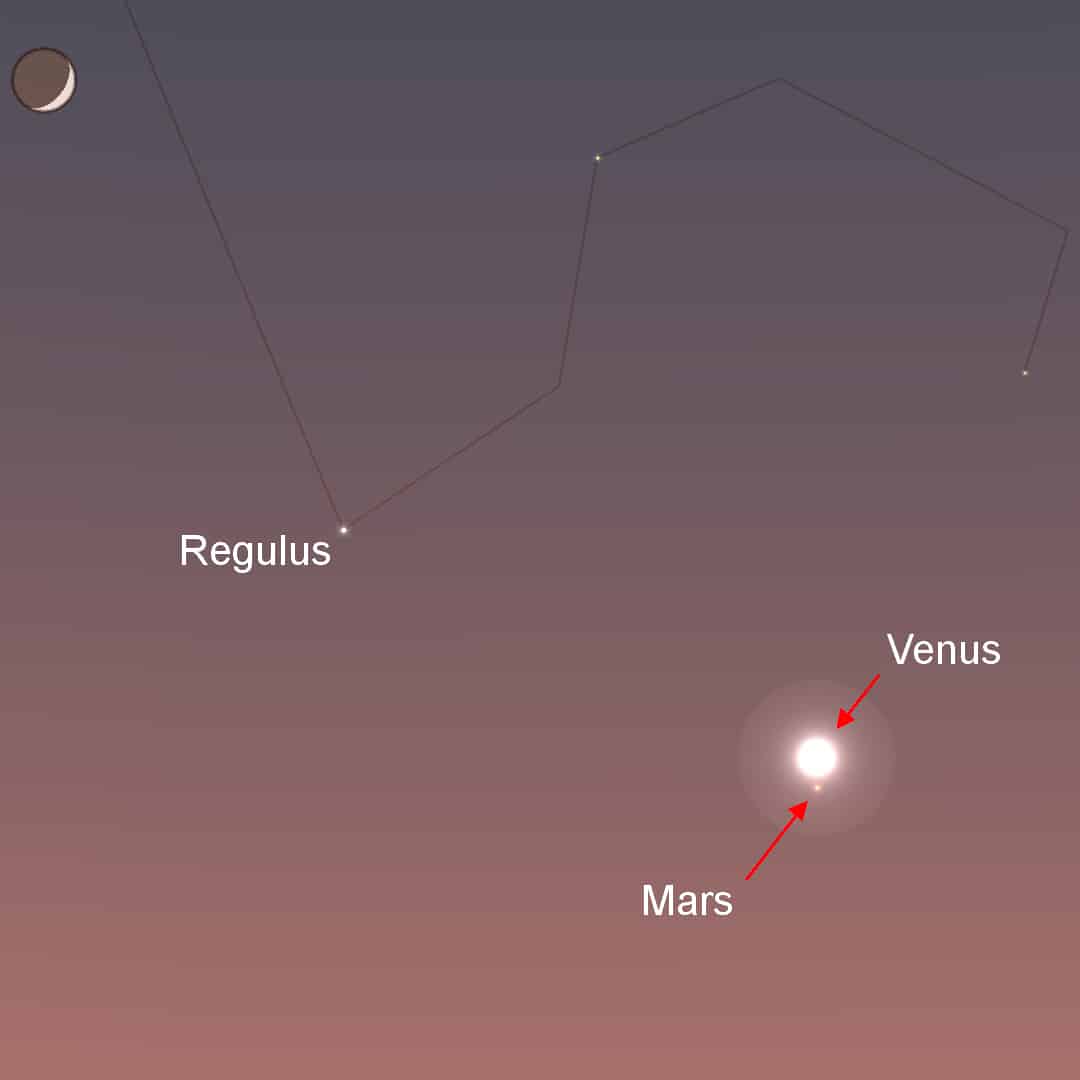
You can easily see them both to the west after sunset with just your eyes, but if you have regular 10×50 binoculars, you’ll see that they fit within the same field of view from July 1st to the 23rd. Better still, you can see them within the same low-powered telescopic field of view from the 11th to the 14th, with the pair at their closest on June 13th.
August 11th to 12th – the Perseid Meteor Shower
We have two meteor showers guaranteed to put on a good show every year. The first of these, the Perseids, reaches its peak in the early hours of August 12th, but you could begin your meteor watch as soon as it gets dark on the 11th.
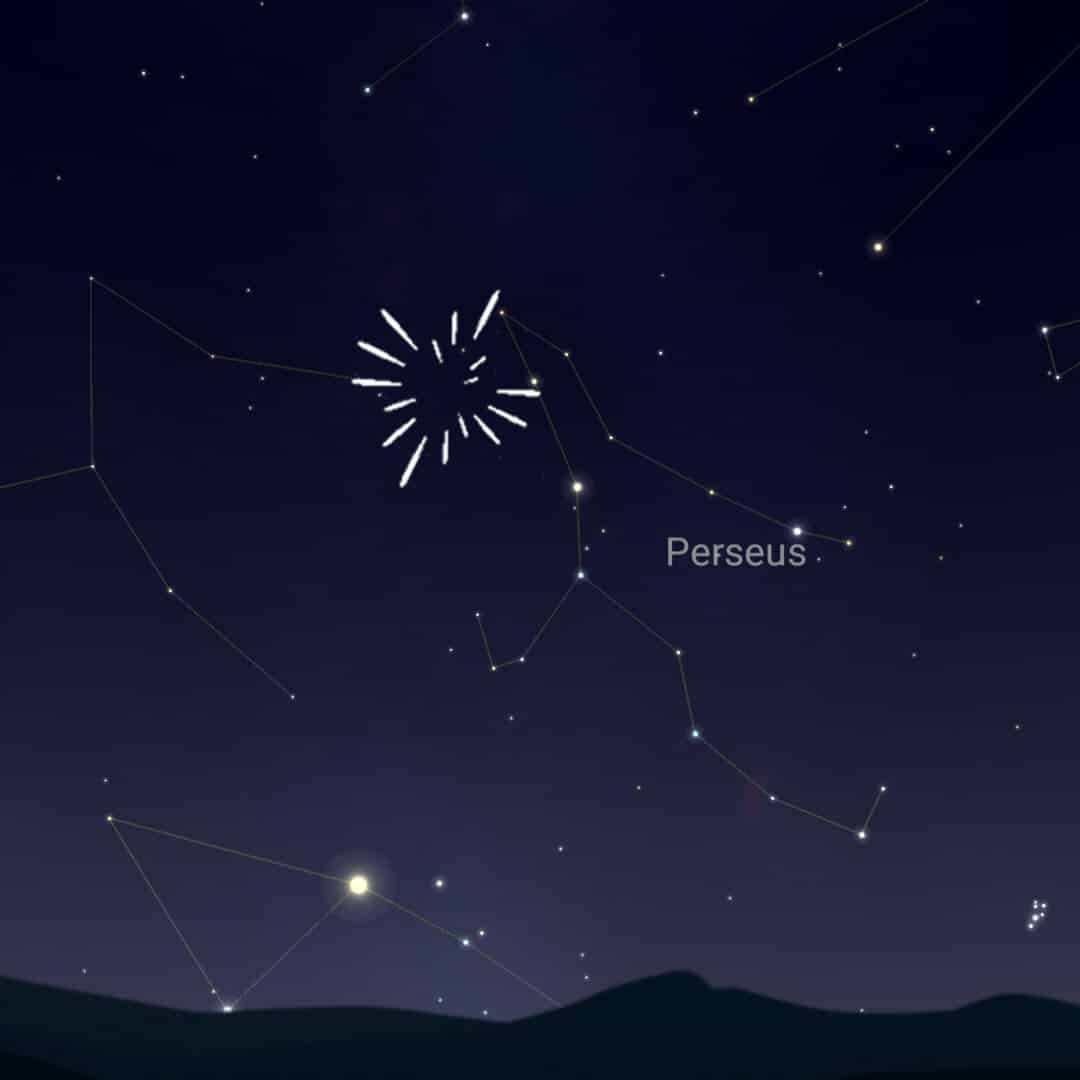
To see the most shooting stars, be sure to get away from the bright lights of a town or city and look towards the north and east. (See our best places for stargazing for some ideas.) Under ideal conditions, you could expect to see around 100 meteors an hour, and with the Moon a crescent in the evening sky, it shouldn’t brighten the sky too much.
October 25th – Mercury & Venus at Their Best
Mercury is an elusive planet, and you have to know when and where to look for it. It reaches its greatest distance from the Sun today and can be seen with the naked eye in the predawn twilight. You can find it relatively easily, low over the eastern horizon at about thirty minutes before sunrise.
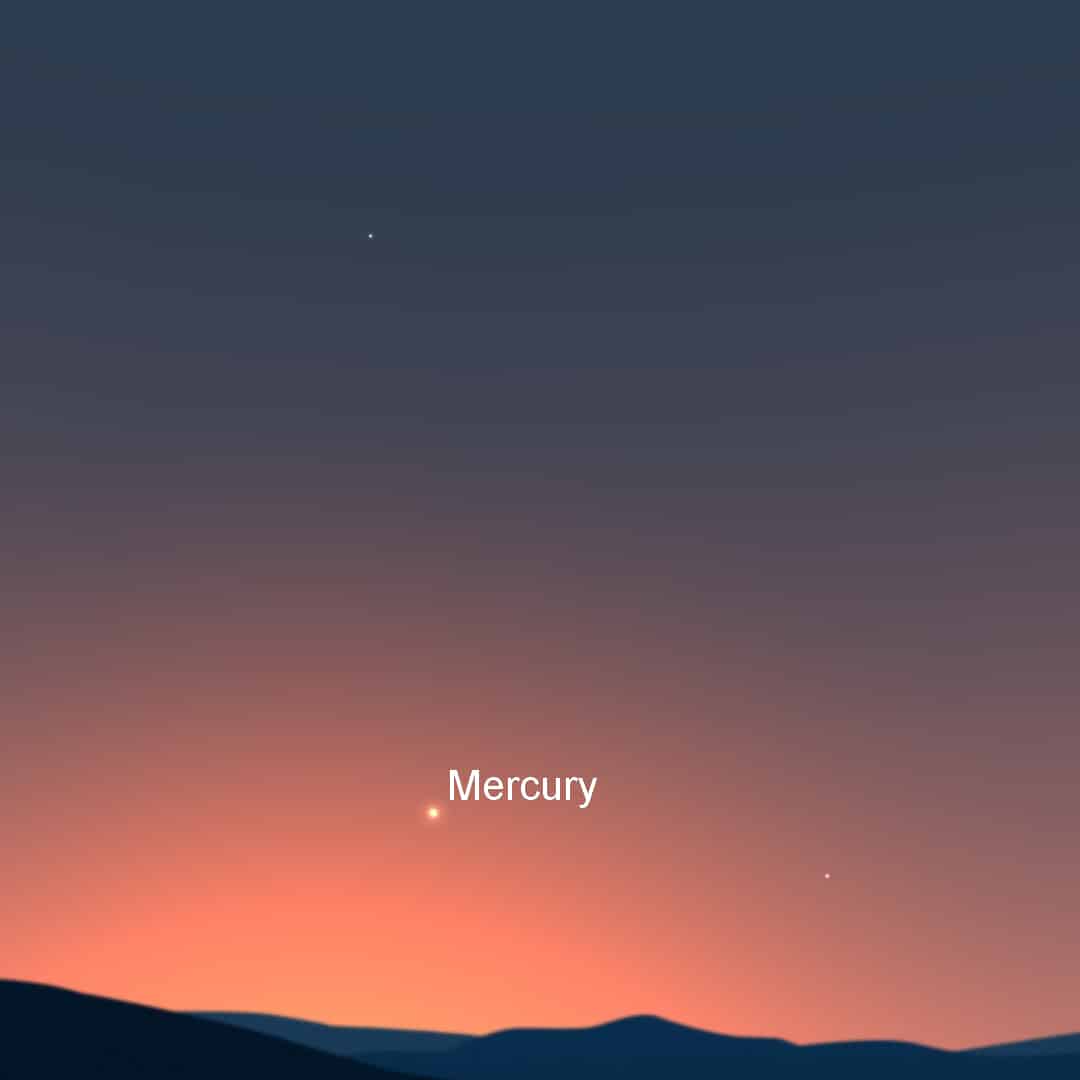
Coincidentally, Venus is almost furthest from the Sun in the evening sky and appears as a brilliant white “star” in the southwest for several hours after sunset. If you have a telescope, both planets will appear roughly 50% illuminated, like a half Moon.
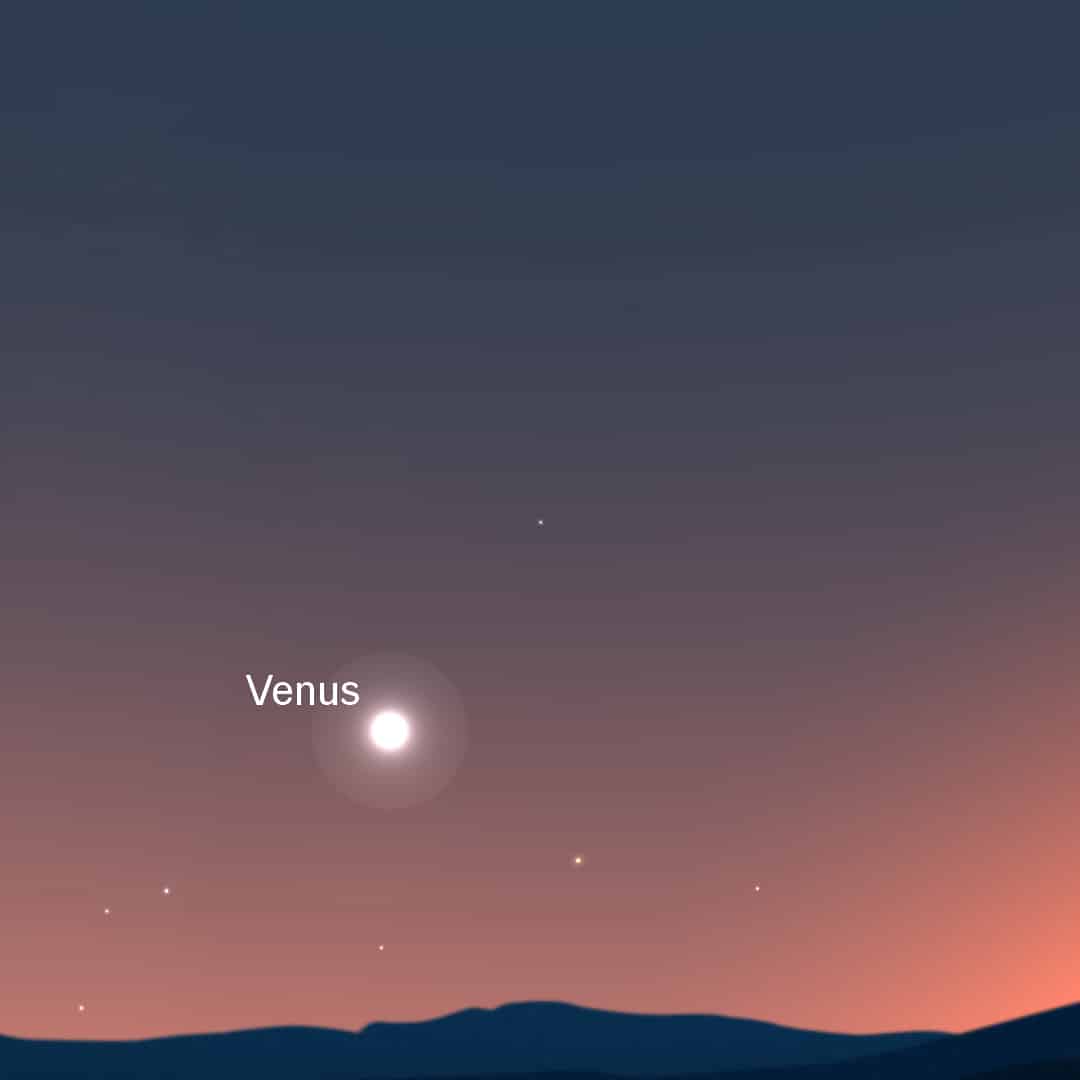
November 18th/19th – Partial Lunar Eclipse
There’s no total lunar eclipse in the second half of 2021, but November’s partial eclipse is almost as good. With 97% of its disc in eclipse, you’ll see a sliver of silvery light along its southern edge.
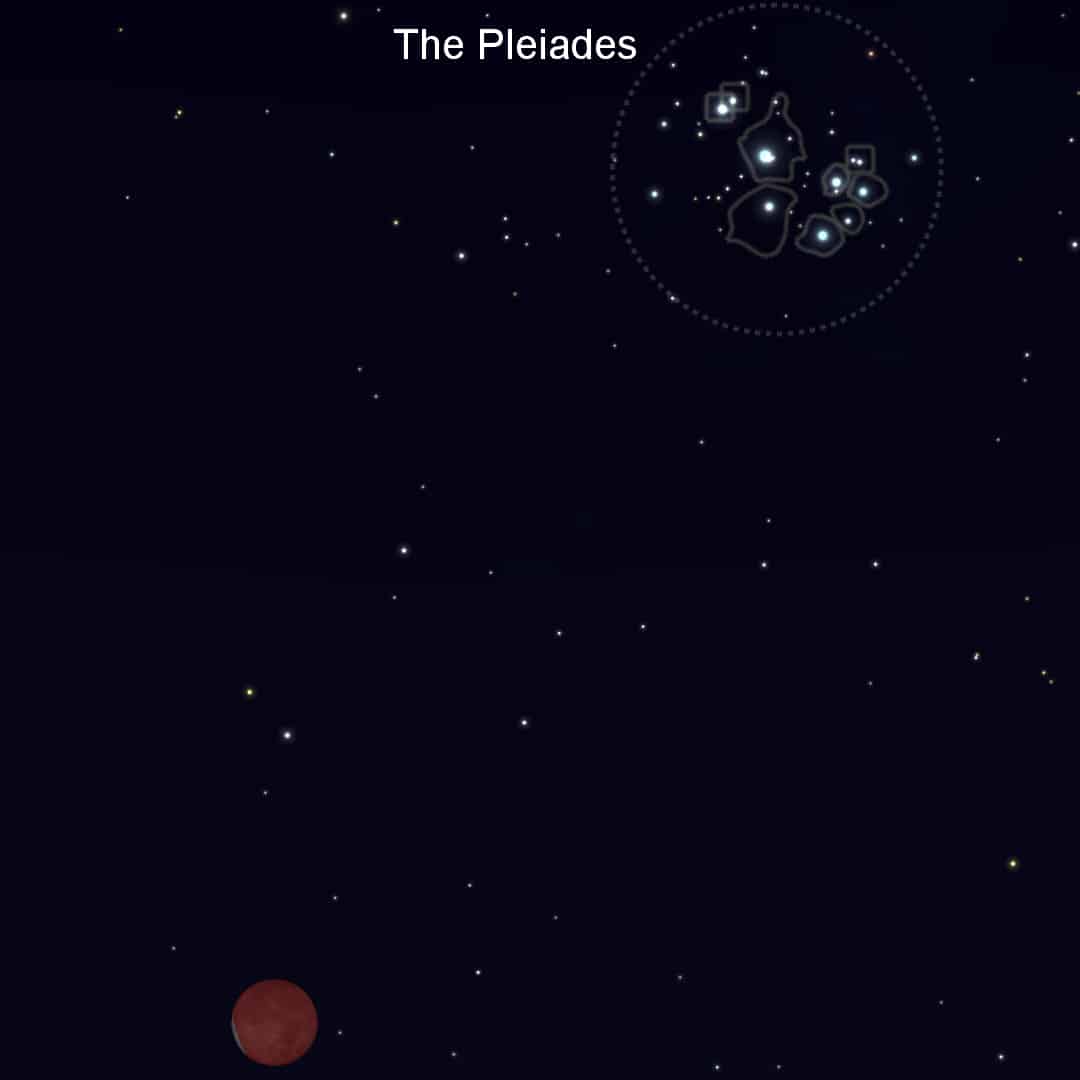
Partial eclipse begins at 2:18am ET on the 19th (11:18pm PT on the 18th) with mid-eclipse occurring at 4:02am ET (1:02am PT). Best of all, the eclipsed Moon will be within the same binocular field of view as the Pleiades star cluster, making this a sight worth staying up for.
December 6th to 8th – A Crescent Moon & Planets
Three planets become visible in the evening twilight at the end of the year: Venus, Saturn and Jupiter. You’ll find them almost equally spaced out toward the southwest after sunset, with the Moon passing by each of them from the 6th to the 8th.
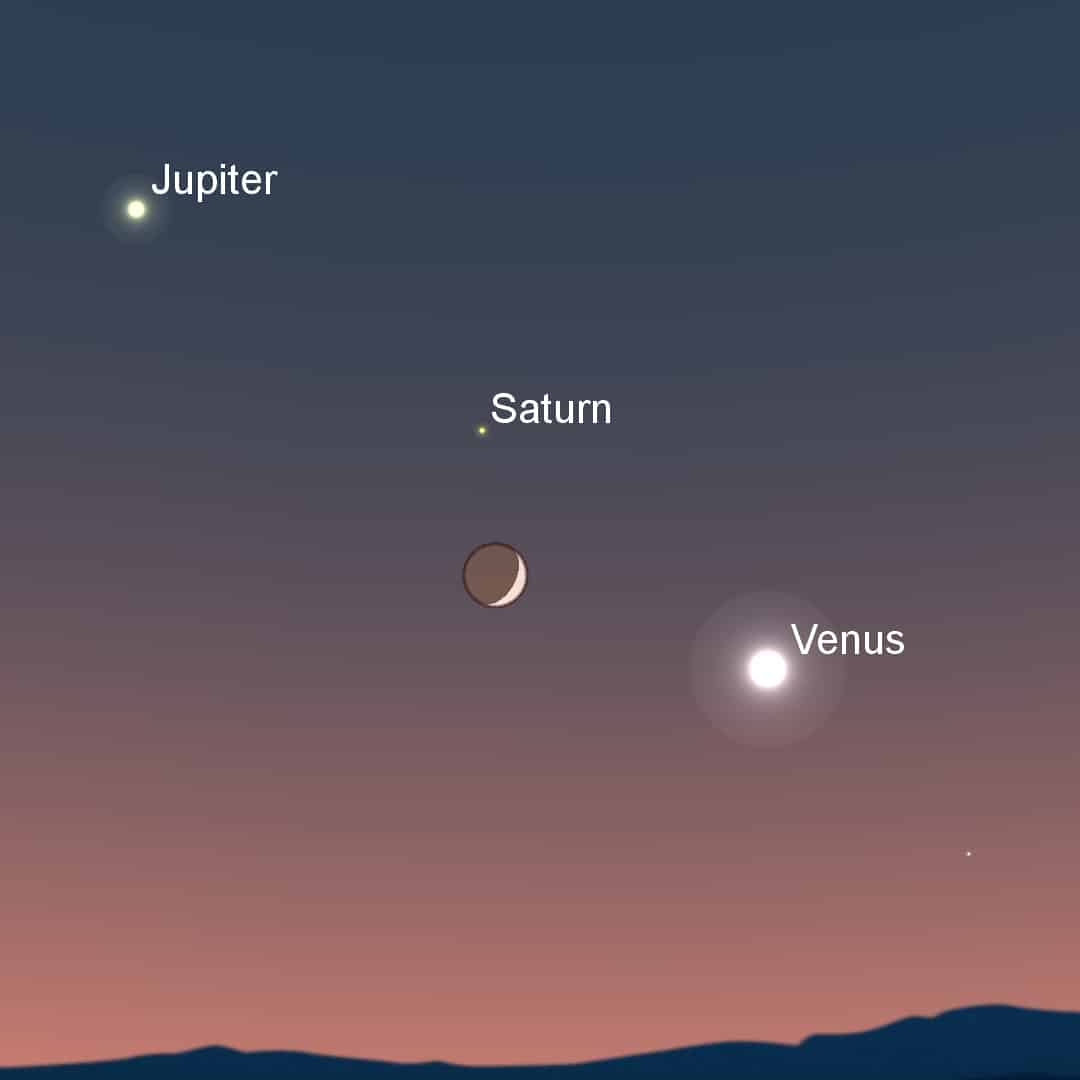
It all starts on the 6th, when the three-day-old crescent Moon appears just to the lower left of Venus. The following night, you’ll find it to the lower left of Saturn (the faintest of the three) and then, lastly, on the 8th, the Moon appears below brilliant Jupiter.
2022 – Astronomical Events Calendar
2022 promises to be a great year for astronomy, with a number of planets appearing close to one another, two lunar eclipses, Mars, Jupiter and Saturn at their best and, lastly, the Geminid meteor shower. (You can also see the Perseids around August 12th, but the full Moon will brighten the sky and make it harder to see the fainter shooting stars.) Mark your calendar now for these great night sky sights and astronomical events in 2022.
February 15th to April 14th – Mars Dances
Mars, the red planet, starts the year in the predawn morning sky and dances with both Venus and Saturn between mid-February and mid-April. It’ll appear within the same binocular field of view of at least one of those planets the entire time.
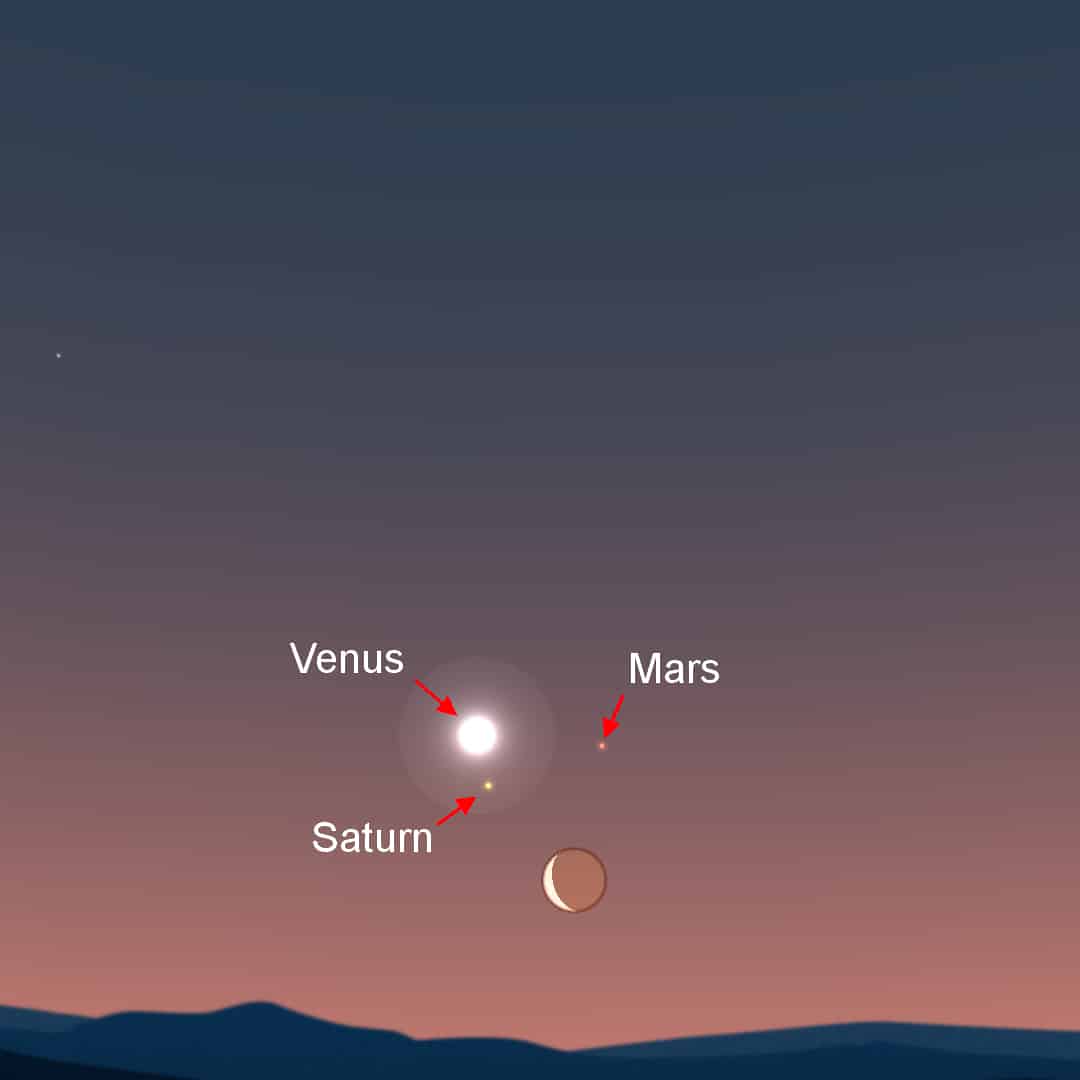
Mars draws closest to Venus on March 16th, but get up early between March 27th and April 1st to see Venus, Mars and Saturn together within the same binocular field of view (and look out for a crescent Moon below the trio on the 28th.) Mars and Saturn then appear within the same low-powered telescopic field of view between April 3rd and 6th, with the pair at their closest on the 5th. Not to be missed!
(Also look out for Jupiter rising above the eastern horizon in April, with a crescent Moon visiting the planets from April 25th to 27th.)
April 24th to May 7th – Jupiter & Venus
Once Venus has left Saturn and Mars behind, it meets up with Jupiter for another close encounter in the predawn twilight. These are the two brightest planets and will be easily seen over the eastern horizon about half an hour before sunrise.
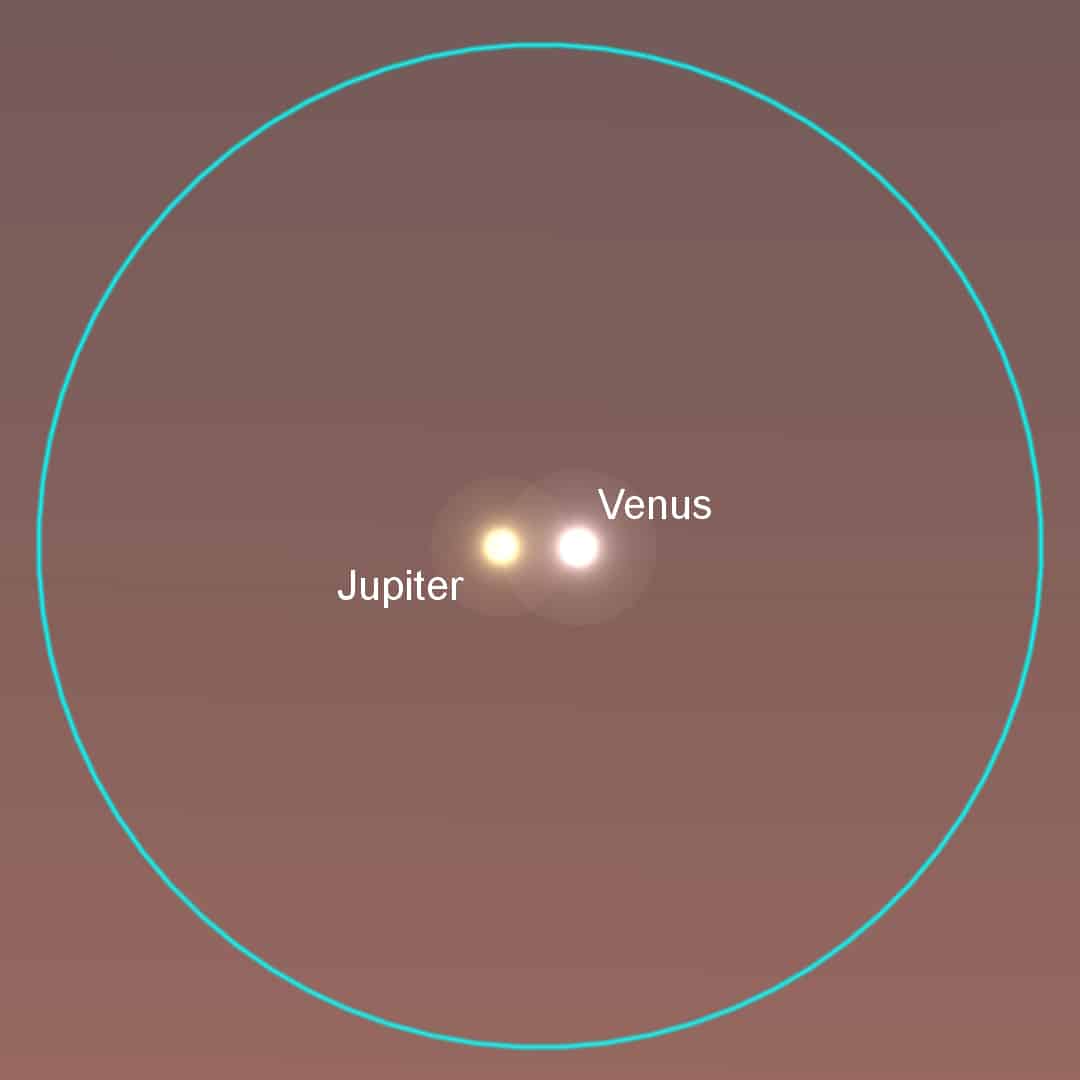
They’ll appear within the same binocular field of view for the two weeks between April 24th and May 7th, with both planets being visible within the same low-powered telescopic field of view from April 29th to May 1st. They’ll be at their closest on April 30th.
May 15th/16th – Total Lunar Eclipse
The first of two total lunar eclipses occurs on the evening of the 15th and early hours of the 16th, but for observers in North America, you’ll need to be in the eastern half of the continent to see the eclipse from start to finish. The partial phase begins at 10:27pm ET (7:27pm PT) with totality beginning at 11:29pm ET. That’s 8:29pm PT, so observers on the west coast could see an orange, eclipsed Moon rising!
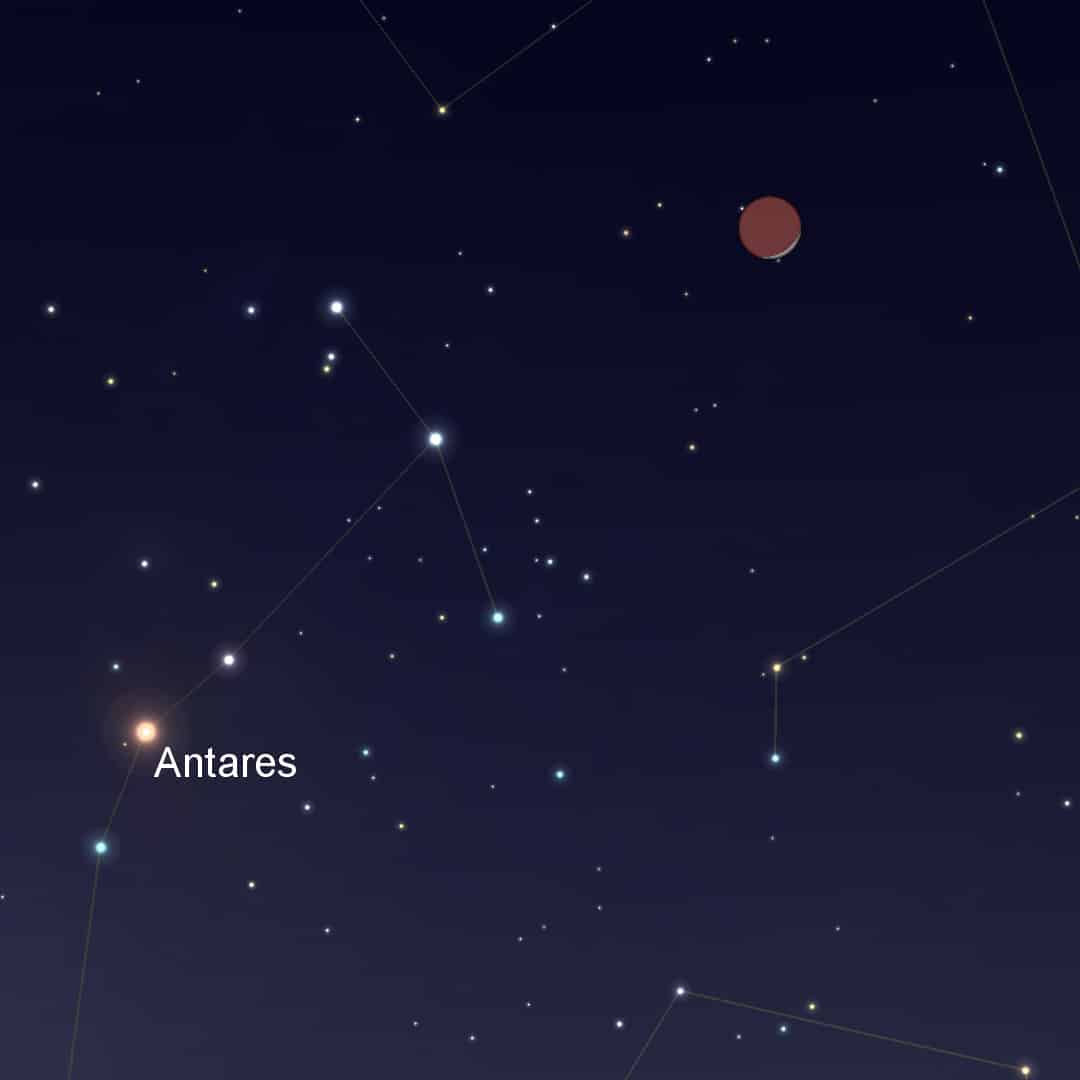
Mid-eclipse occurs at 12:11am on the 16th for observers on the East Coast, or 9:11pm PT on the 15th for those on the West Coast. Totality then ends at 12:53am ET (9:53pm PT) with the partial eclipse ending slightly more than an hour later. Look out for coppery Antares to the lower left of the Moon!
May 18th to June 8th – Mars Passes Jupiter
Both Mars and Jupiter have already appeared close to Venus, but now it’s time for them to pass one another! You’ll find them within the same 10×50 binocular field of view from mid-May to early June, with the two appearing within the same low-powered telescopic field of view from May 27th to May 31st. They’ll draw closest on May 29th.
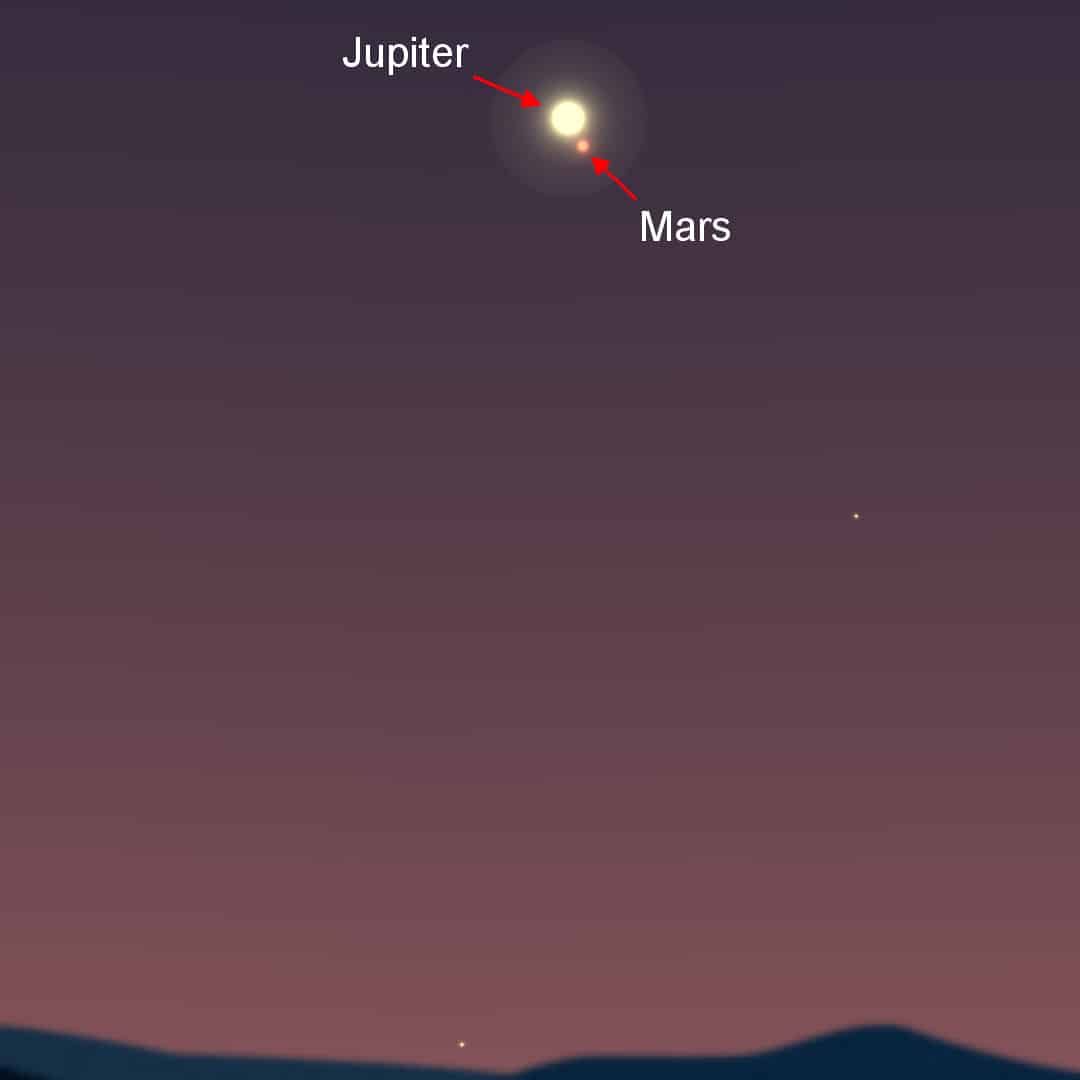
You can easily see Jupiter as a small disc, but Mars will only appear star-like.
August 14th – Saturn at Opposition
Saturn is now “at opposition”, but what exactly does this mean? It’s literally opposite the Sun in the sky, so it rises at sunset and sets at sunrise. It’s therefore visible throughout the entire night and is at its brightest and best for the year!
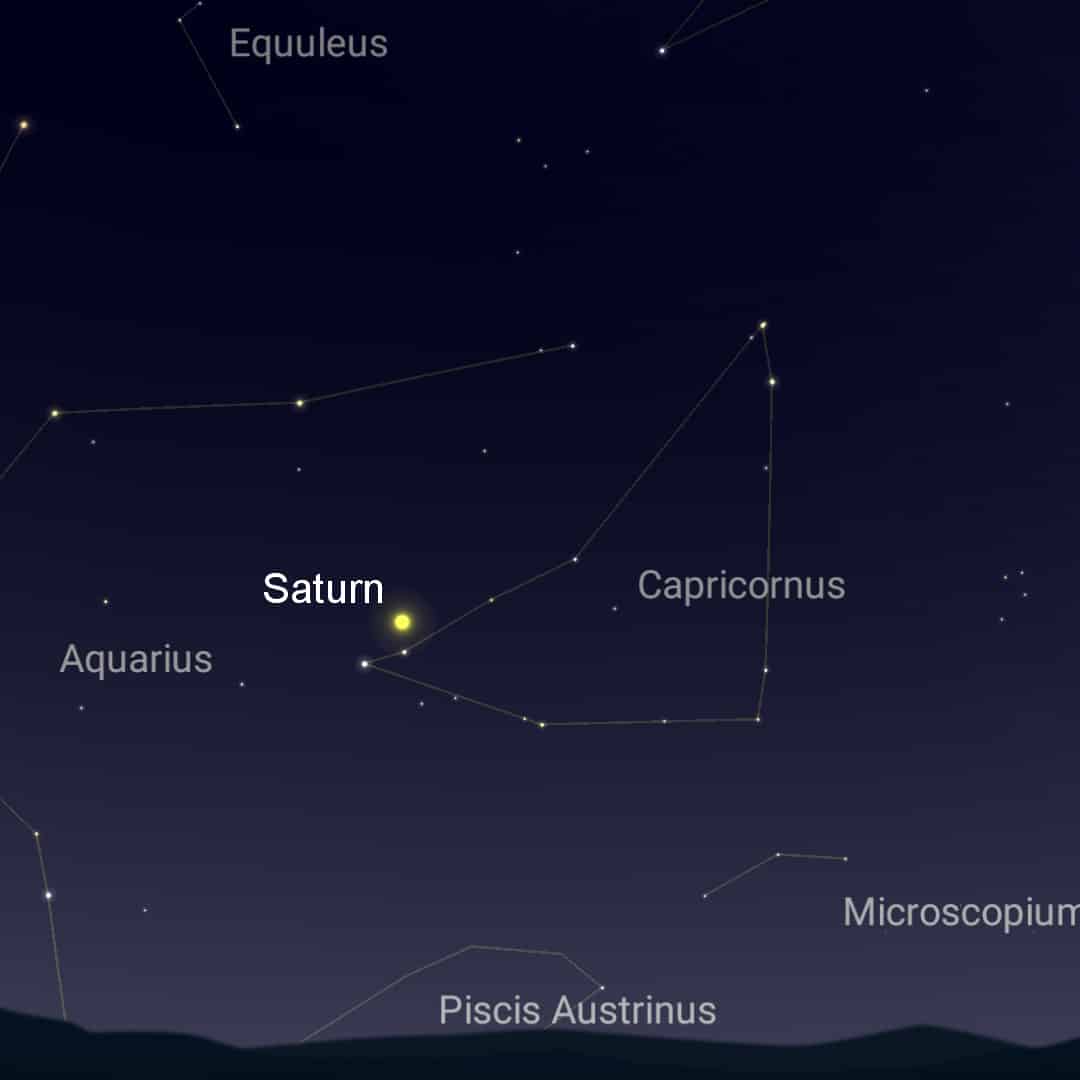
This year, it’s among the relatively faint stars of Capricornus, but you can find it as a reasonably bright yellow-white “star.” Telescopically, you can easily see the planet’s rings and a handful of its brightest moons, including Titan. Titan’s the second largest moon in the solar system (after Jupiter’s Ganymede) and larger than the planet Mercury!
August 19th – The Moon Between Mars and the Pleiades
Here’s something you won’t see every day (or night) – the Moon, Mars and the Pleiades star cluster within the same 10×50 binocular field of view! The Pleiades is a beautiful star cluster that’s a fine sight in both binoculars and a telescope. You can find it in the constellation Taurus where it lies close to the ecliptic, the path the Sun, Moon and planets follow as they move across the sky.
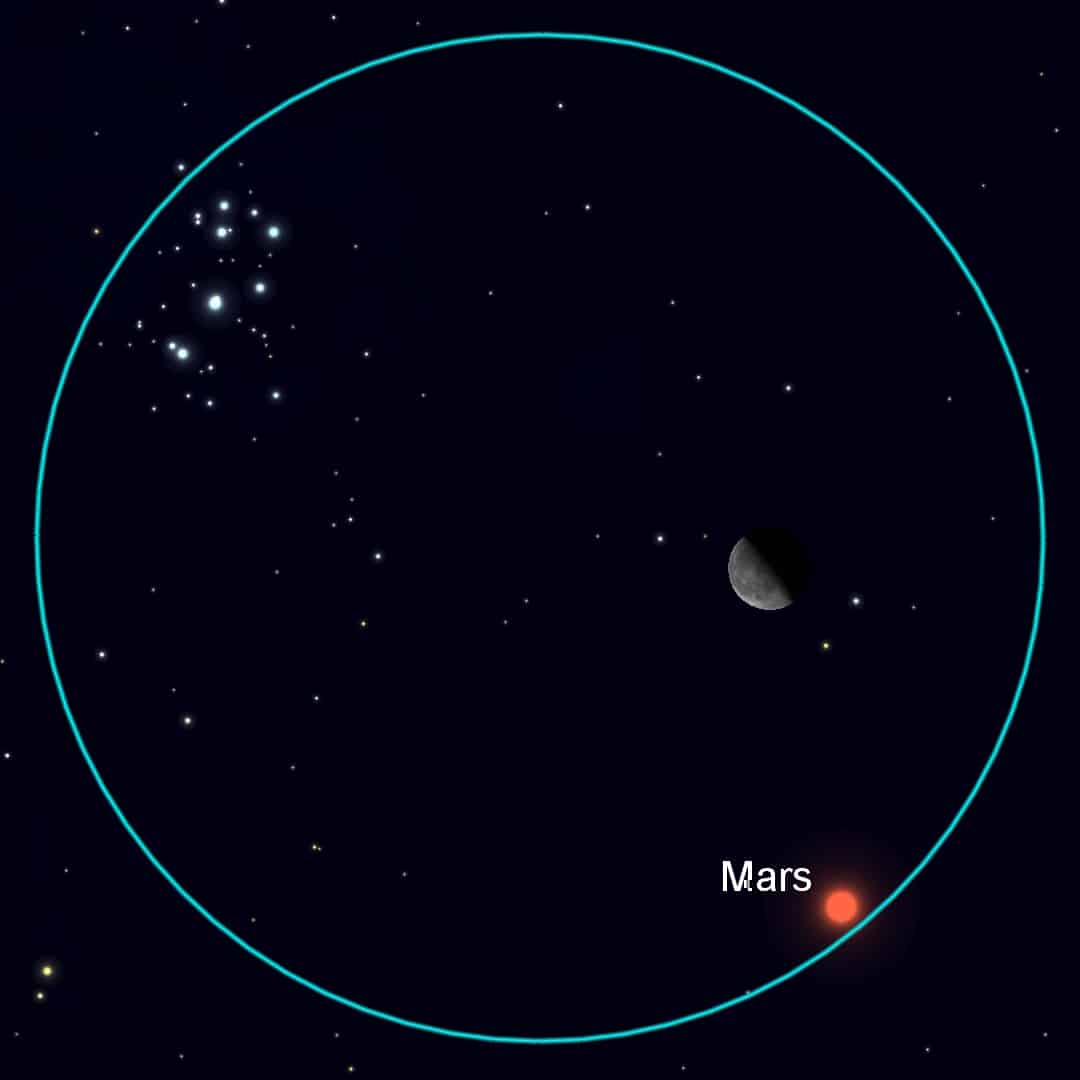
It’s not unusual for the Moon or a planet to appear close to the Pleiades, but it’s rare for both the Moon and a planet to be nearby at the same time. You’ll need to get up early (about 90 minutes before sunrise) to see the Pleiades clearly, but it should be worth the effort!
September 26th – Jupiter at Opposition
Saturn reached opposition on August 14th, and now it’s Jupiter’s turn. You’ll find it among the faint stars of Aquarius, where it shines as an unmissable golden “star” towards the south around midnight. (Alternatively, look toward the east after sunset or toward the south-east around mid-evening.)
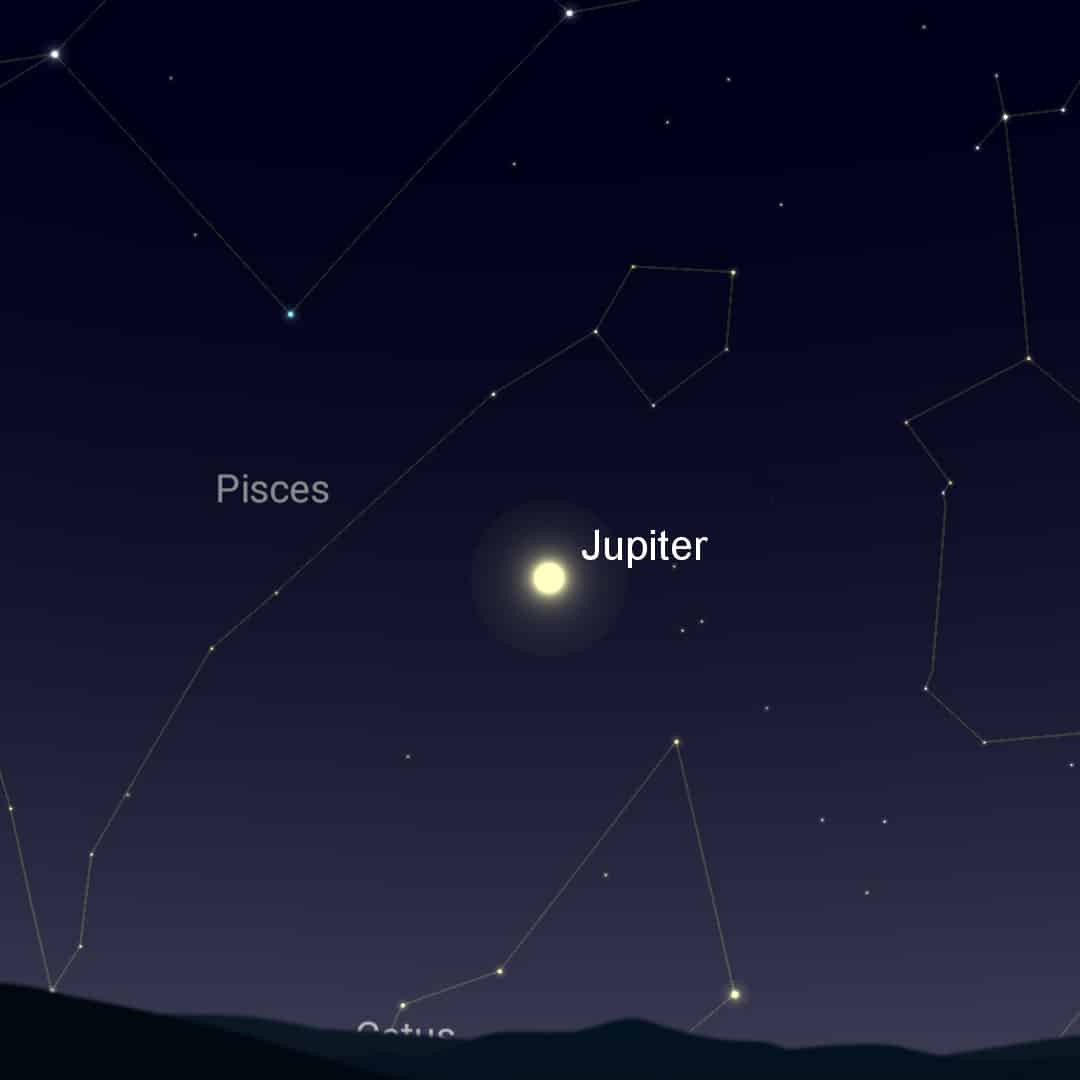
Through a telescope, you can easily see its four largest moons, Io, Europa, Ganymede and Callisto, not to mention the dark bands of its cloud tops. If you have a larger telescope, you may even be able to spot the famous Great Red Spot, a hurricane-like storm that’s large enough to swallow the entire Earth!
November 8th – Total Lunar Eclipse
While May’s total lunar eclipse was best suited for observers in the eastern half of North America, November’s is the opposite. Observers on the West Coast can see the eclipse from start to finish, while those in the Mid-West and on the East Coast will miss out on its conclusion. Either way, if you live in North America you’ll need to get up early to enjoy it.
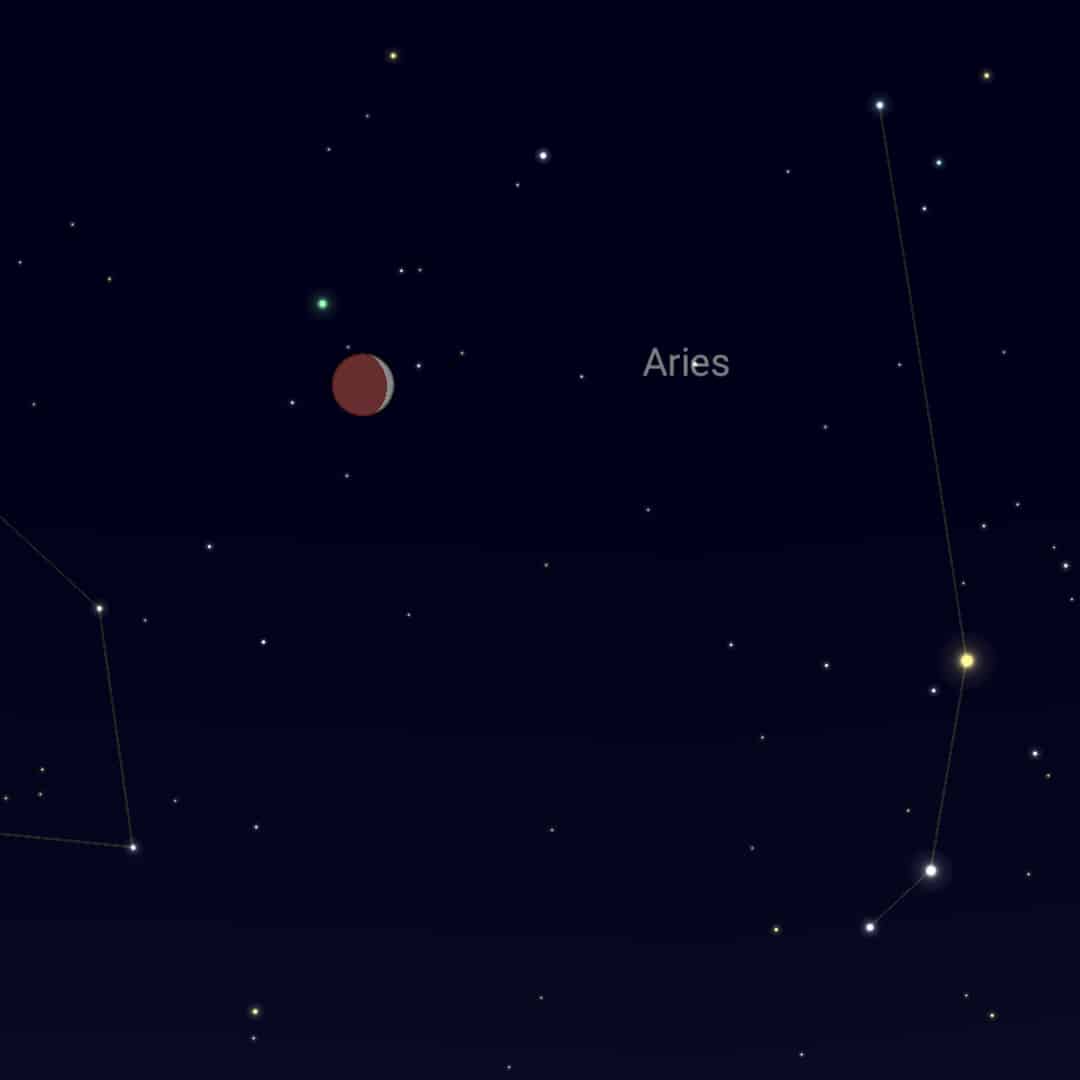
Partial eclipse begins at 4:09am ET (1:09am PT) with totality beginning at 5:16am ET (2:16am PT) and maximum eclipse occurring at 5:59am ET (2:59am PT). That’s coming up on sunrise/moonset on the East Coast. Totality comes to an end at 6:41am ET (3:41am PT) and the partial phase finishes at 8:56am ET (5:56am PT).
December 8th – Mars at Opposition
Unlike Jupiter and Saturn, which typically reach opposition once a year, Mars is only at its best once every two years or so. Fortunately, 2022 is one of those years, and while Mars is not as close as it could be, it’s still well worth taking a look through a telescope!
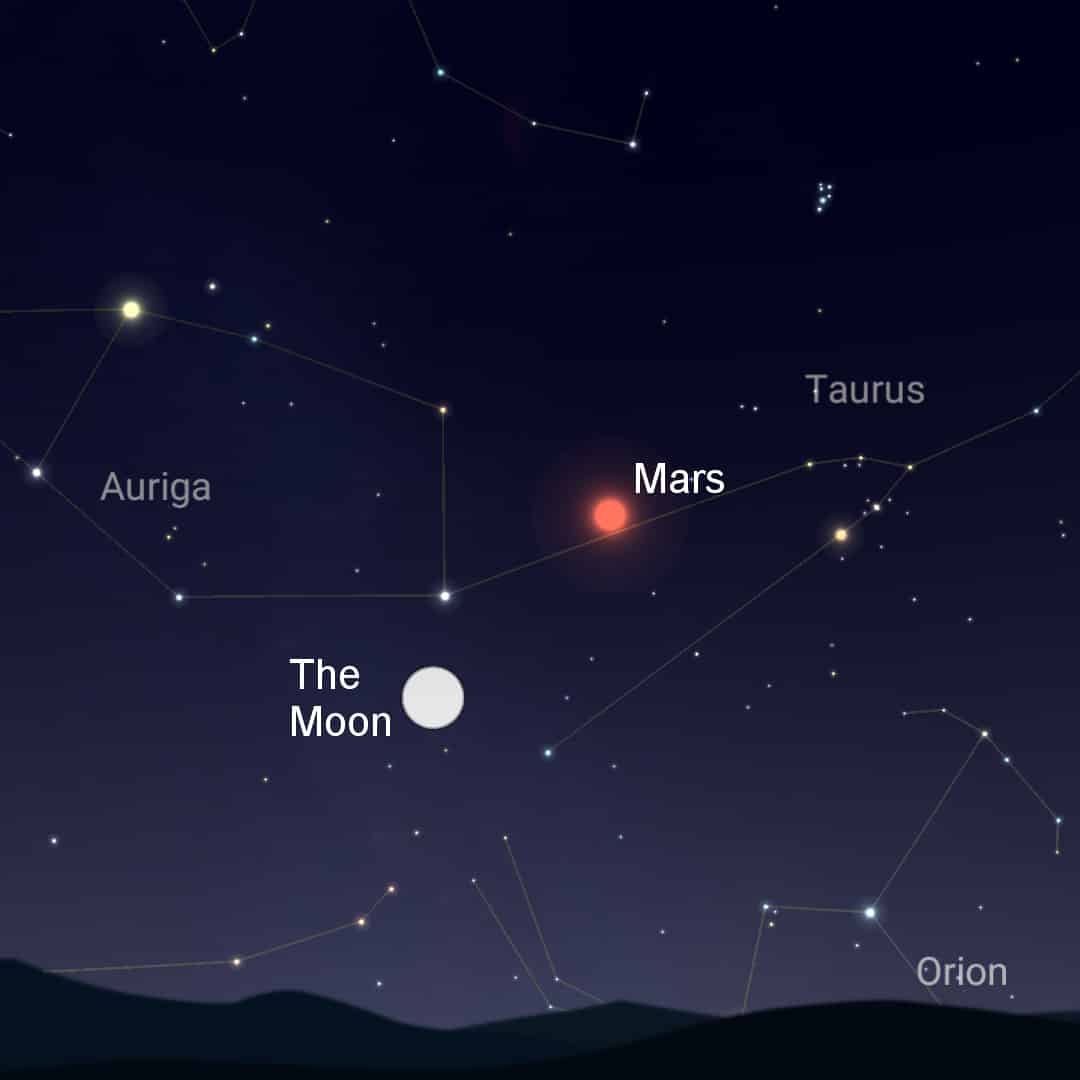
If you’re observing with just your eyes, it’ll appear as a brilliant, coppery “star” in the constellation of Taurus. Binoculars won’t improve the view, but through a telescope you’ll see a small disc (less than half the size of Jupiter) and possibly some dark surface markings. You’ll need a telescope aperture greater than 5” to get a good look; an 8” aperture would let you take in some of the surface features.
December 13th to 14th – The Geminid Meteor Shower
We end our astronomical events calendar for 2022 with fireworks – in this case, the Geminid meteor shower. While this has always been a reliable source of shooting stars, over recent years the Geminids have been producing more than usual. Under ideal conditions, or at a dark sky site far away from the lights of a town or city (and with the constellation Gemini high overhead), you could see as many as 120 meteors an hour!
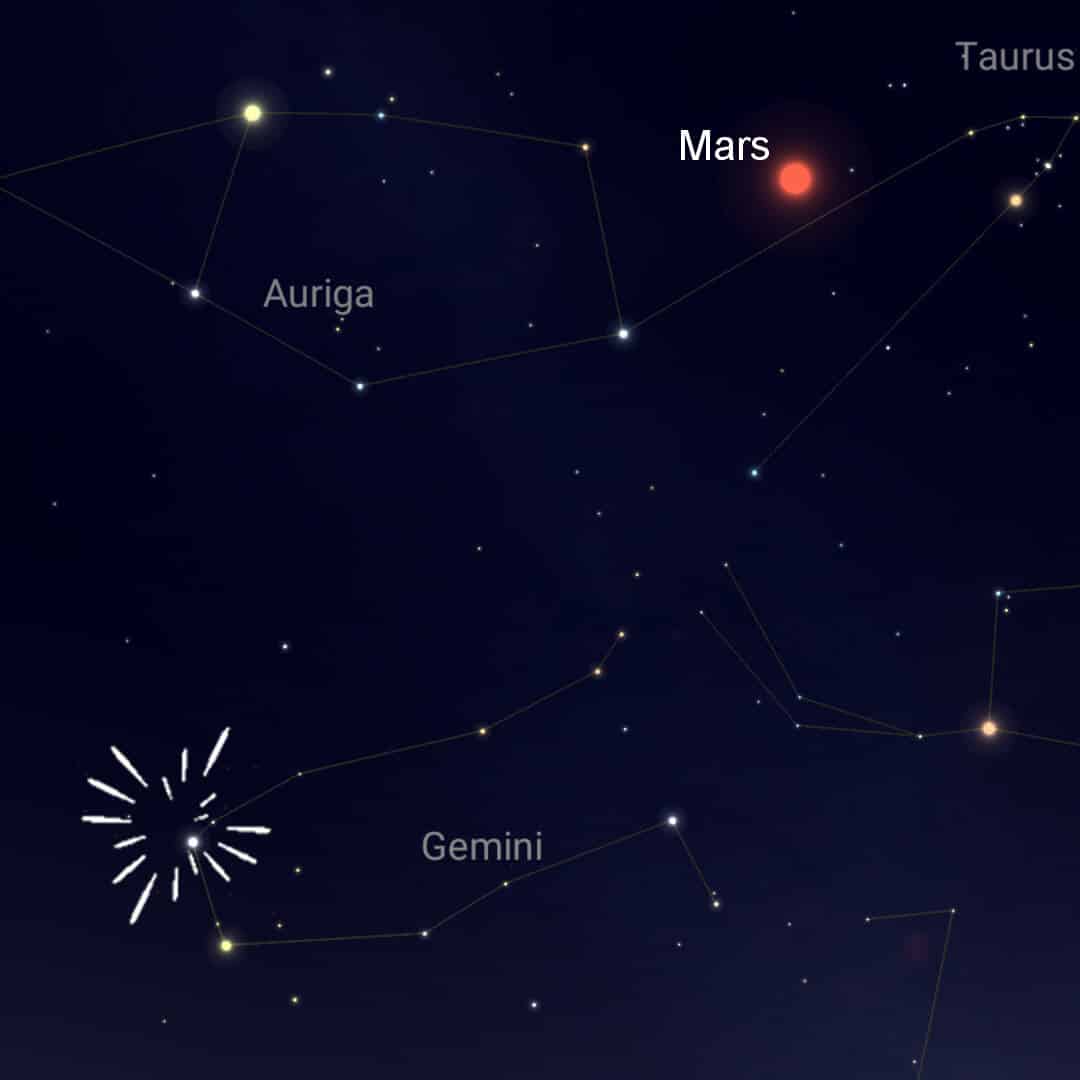
You can start your search on December 13th. The Moon, about six days past full, won’t rise until around 10:30pm, so its light won’t brighten the sky and drown out the fainter meteors. You’ll want to look to the northeast and southeast for your best chance to seeing some shooting stars.
Final Thoughts | Astronomical Events Calendar 2021-2022
We hope you’ve enjoyed our astronomy calendar and guide to some of the best celestial events in 2021-2022. If you want to learn more about astronomy and get the perfect telescope for your needs, be sure to check out some of our beginner guides on this site!
Click Here to Download or Share
(Also, if you liked this article, please share it using the social media buttons below!)
*** Special thanks to Richard Bartlett & Laboni Hasan ***
Images created using SkySafari Pro by Curriculum Software




